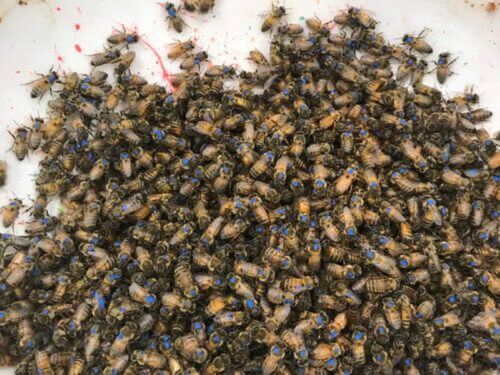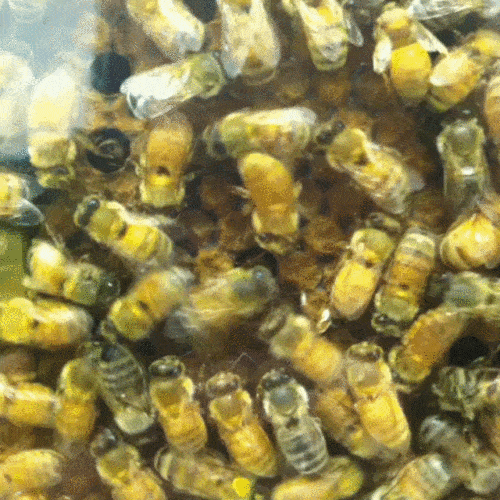The Honey Council: a third of the world's honey bee population has probably died out due to a lack of food (nectar), the whole world must mobilize resources to protect the honey bee which provides all living things with sources of food on the planet, which is becoming depleted of resources
By Chelsea Cook, Marquette University, Milwaukee (plus a reference from the Israel Honey Council to the study)

just like people, The honey bees Different in the way they look for the source of nectar (bee food) and different in the nature of the communication with other bees in the hive, as for the direction to the location of finding the nectar. As always - they are creative, and not necessarily following the herd. There are curious bees, a fact that creates an advantage in the hive, especially if the known sources of nectar run out.
The researchers state in the study that successful companies make better decisions when people - a pool of friends, consist of a variety of their innate learning styles and create a wide range of information, whether it is bees looking for nectar, or friends trying to decide which restaurant to go to. The variety of types of behavior among people may help social groups to adapt to changing global environments, as is indeed happening today in a world depleted of familiar resources.
Cook: "I study collective behavior, especially how groups make decisions. My research colleague and I discovered that individual bees are seemingly born with a style determined from the day of their creation and predetermined, they can be focused larvae or curious larvae, with a different character from the group. This is how we discovered that the existence of different approaches to gathering food, turns out to be an advantage for large colonies that rely on the changing food landscape, of blooms and nectar that appear at certain times and in different and changing locations."
When animals gather food, they must balance searching for new food with exploiting known food sources. Usually, individual animals do this, but in collective societies, such as honey bee colonies, there are bees that are able to split the work and do both tasks at the same time.
When honeybees search for food, nectar and pollen, they learn a lot of information about the flowers they encounter in the field - smells, colors and the locations of the flowers during the exploration of the environment. Some bees focus on information related to food and ignore any new information, similar to selective attention in humans. In contrast, other bees display a learning behavior labeled curiosity. They are interested in learning about new food sources, and not only those already known to the hive.
In the study, the scientists examined how curious bees and focused bees can be cultivated. The study involved tracking female queens, in order to check if they are focused and conservative or curious. Later the researchers used royal insemination, to Raise a curious queen with a curious single male, and a focused queen with a focused single male. Usually queens mate with 12-15 different males and create a genetically diverse worker network, therefore using a single male maintained the production of genetically uniform workers.
"Once we created curious and genetically targeted honey bee populations, we had to make sure that they would not be affected by their social environment. We did this by placing bees in colonies where bees with a similar type of learning to the bees being studied, alongside those with a variety of different types of learning. We tracked each bee by marking a paint spot on the thorax as soon as they were born. The findings showed that there is no doubt that the bees showed the same behavior we saw in their parents, regardless of the social group the bees were in," say the researchers.
Later, the researchers created three different colonies - for the focused bees, for the curious bees and a colony of half focused and half curious bees - and observed their behavior. The researchers allowed the honey bees to choose between two locations to collect food: a familiar and reliable one that remained in the same place for four days, and a new food location that changed smell, color and location each day.

The researchers discovered that the targeted and conservative colony quickly found the familiar food place and used the feeding source throughout the week, rarely visiting the new food option. The curious colony, as expected, visited the familiar and novel food locations equally, showing no preference. Rather, the mixed colony behaved like the targeted colony. The researchers looked into why this happened, and discovered that The targeted bees danced more intensively (as a call to the bees for the location of the food) As they make 0.59 rotations per second, significantly faster than the 0.52 rotations per second of the curious bees. "Just like the loud and excited humans, the focused bees with their intense activity attracted more bees in favor of the familiar and reliable food. Because curious bees are interested in everything, they are perfect listeners and are more easily convinced to visit the chosen food of their enthusiastic bee friends," the researchers point out and say that follow-up work is underway to investigate how the dynamics of the launch work in a changing food landscape - one where the familiar food runs out, and whether the bees Will the targeted ones turn their attention to the curious bees, who already know where other food locations are?
The research is funded by the National Institutes of Health in the United States, the US Department of Agriculture and the National Science Foundation.
in the Honey Council They welcome the research and say that there is a supreme importance to the research being carried out in research institutes and universities all over the world, to the study of bee behavior in everything related to the bees' food sources, due to the dwindling natural resources, due to global warming in the world. This is in order to find out how to help preserve the most important pollinator in the world.
The Honey Council reminds that without the honey bees, the pollination of the agricultural crops will not be carried out, and there will be no food for humans, or the animals of the farm and the wild, to sustain life.
According to the data of the Honey Council, there are currently about 510 beekeepers operating in Israel who take care of about 120 hives, of which 80 hives are placed in agricultural areas and are used for pollination. In Israel, through the pollination of crops, the honey bee contributes to the agricultural GNP in Israel about NIS 3 billion per year. The value of bee pollination in the United States is more than 14 billion dollars a year and in the whole world about 215 billion dollars.
to the article on The Conversation website
More of the topic in Hayadan:
